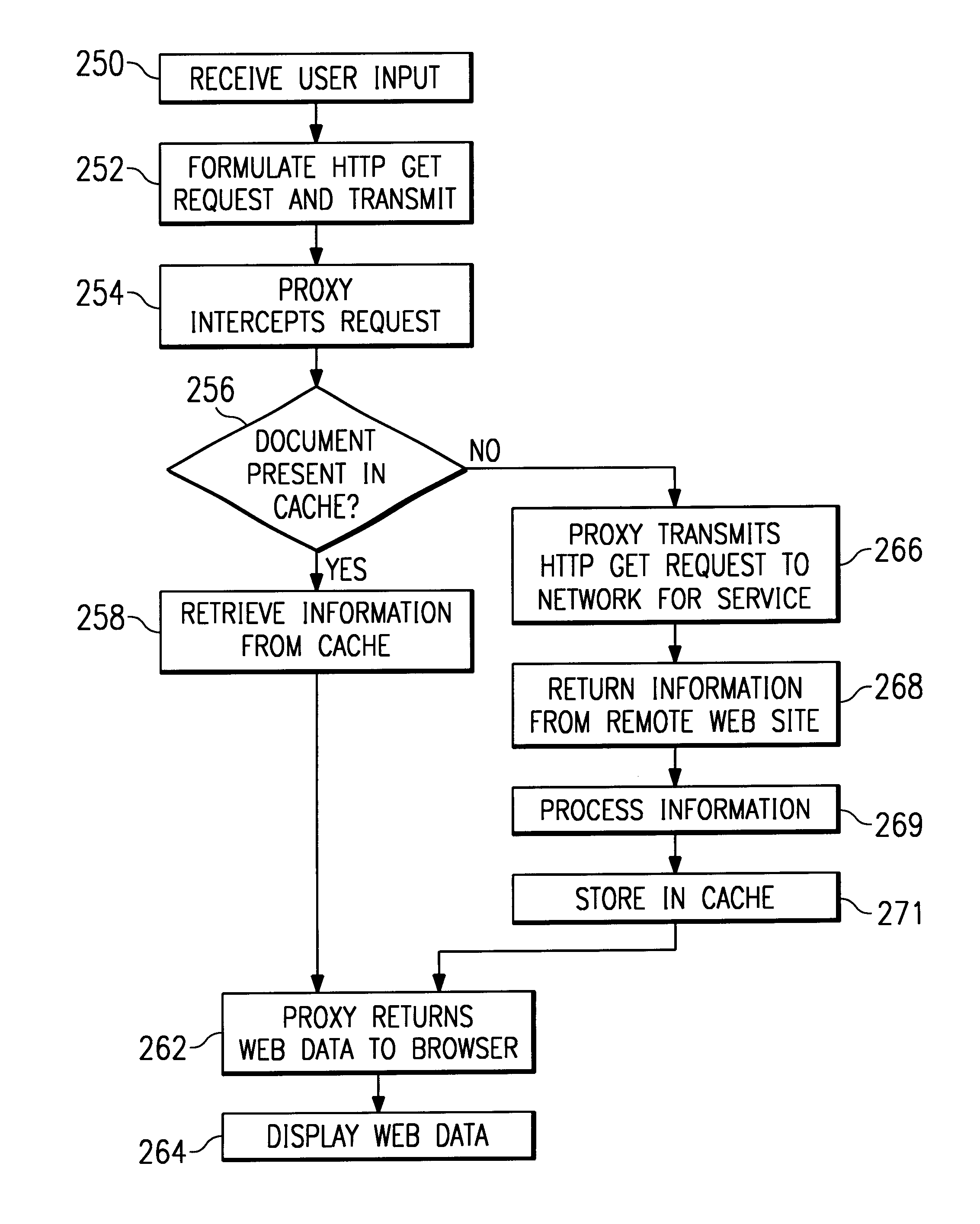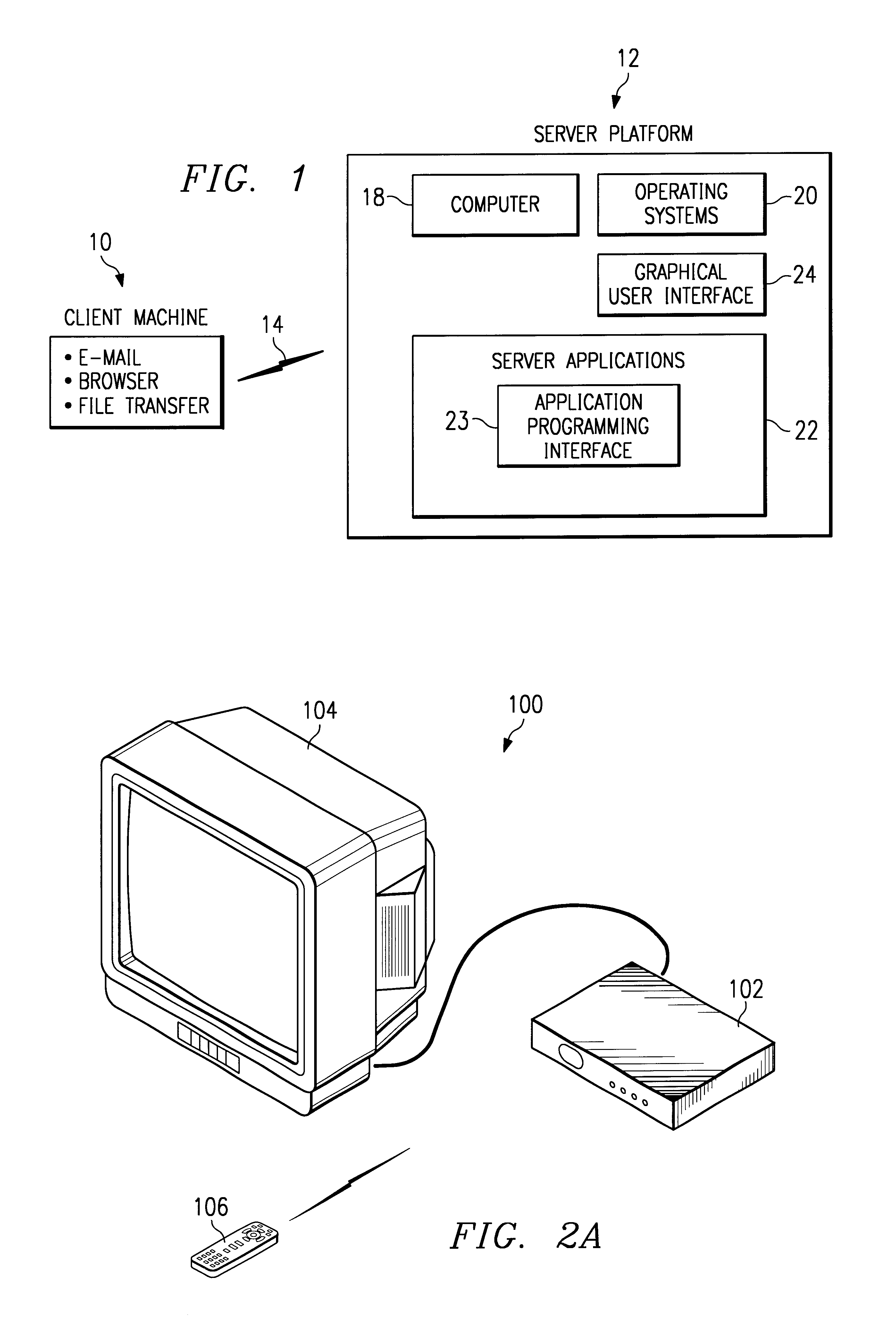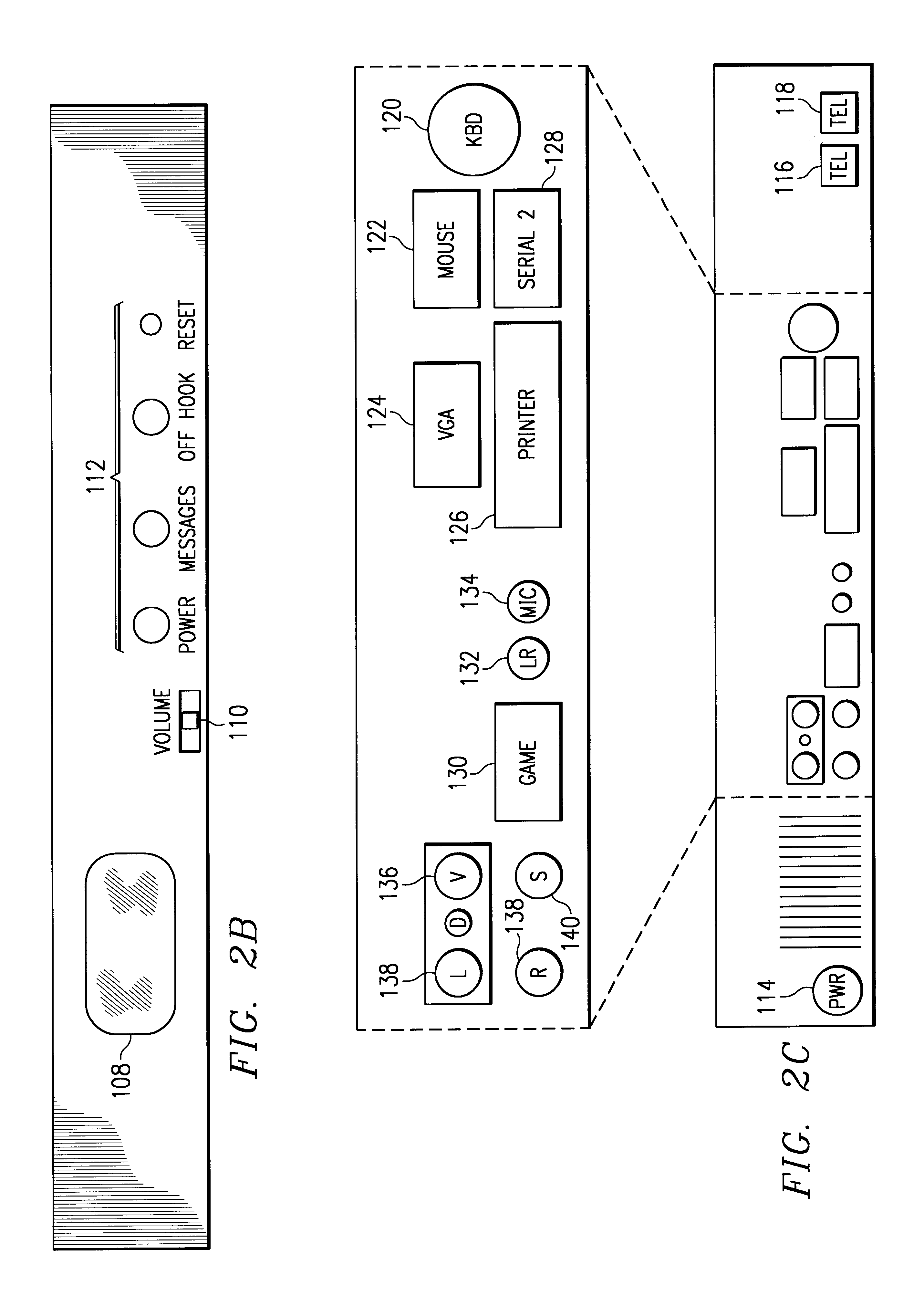HTTP caching proxy to filter and control display of data in a web browser
a technology of data filtering and proxy, applied in the field of computer network communication, can solve the problems of slow page access time, redundant or wasted web site storage capacity, and a significant percentage of households still without personal computers
- Summary
- Abstract
- Description
- Claims
- Application Information
AI Technical Summary
Benefits of technology
Problems solved by technology
Method used
Image
Examples
Embodiment Construction
[0040]A representative system in which the present invention is implemented is illustrated in FIG. 1. An Internet client machine 10 is connected to a server platform 12 via a communication channel 14. For illustrative purposes, channel 14 is the Internet, an Intranet or other known connection. In the case of the Internet, server platform 12 is one of a plurality of servers which are accessible by clients, one of which is illustrated by machine 10. A client machine typically includes a suite of known Internet tools 16 to access the servers of the network and thus obtain certain services. These services include one-to-one messaging (e-mail), one-to-many messaging (bulletin board), on-line chat, file transfer and browsing. Various known Internet protocols are used for these services. Thus, for example, browsing is effected using the Hypertext Transfer Protocol (HTTP), which provides users access to multimedia files using Hypertext Markup Language (HTML). The collection of servers that ...
PUM
 Login to View More
Login to View More Abstract
Description
Claims
Application Information
 Login to View More
Login to View More - R&D
- Intellectual Property
- Life Sciences
- Materials
- Tech Scout
- Unparalleled Data Quality
- Higher Quality Content
- 60% Fewer Hallucinations
Browse by: Latest US Patents, China's latest patents, Technical Efficacy Thesaurus, Application Domain, Technology Topic, Popular Technical Reports.
© 2025 PatSnap. All rights reserved.Legal|Privacy policy|Modern Slavery Act Transparency Statement|Sitemap|About US| Contact US: help@patsnap.com



